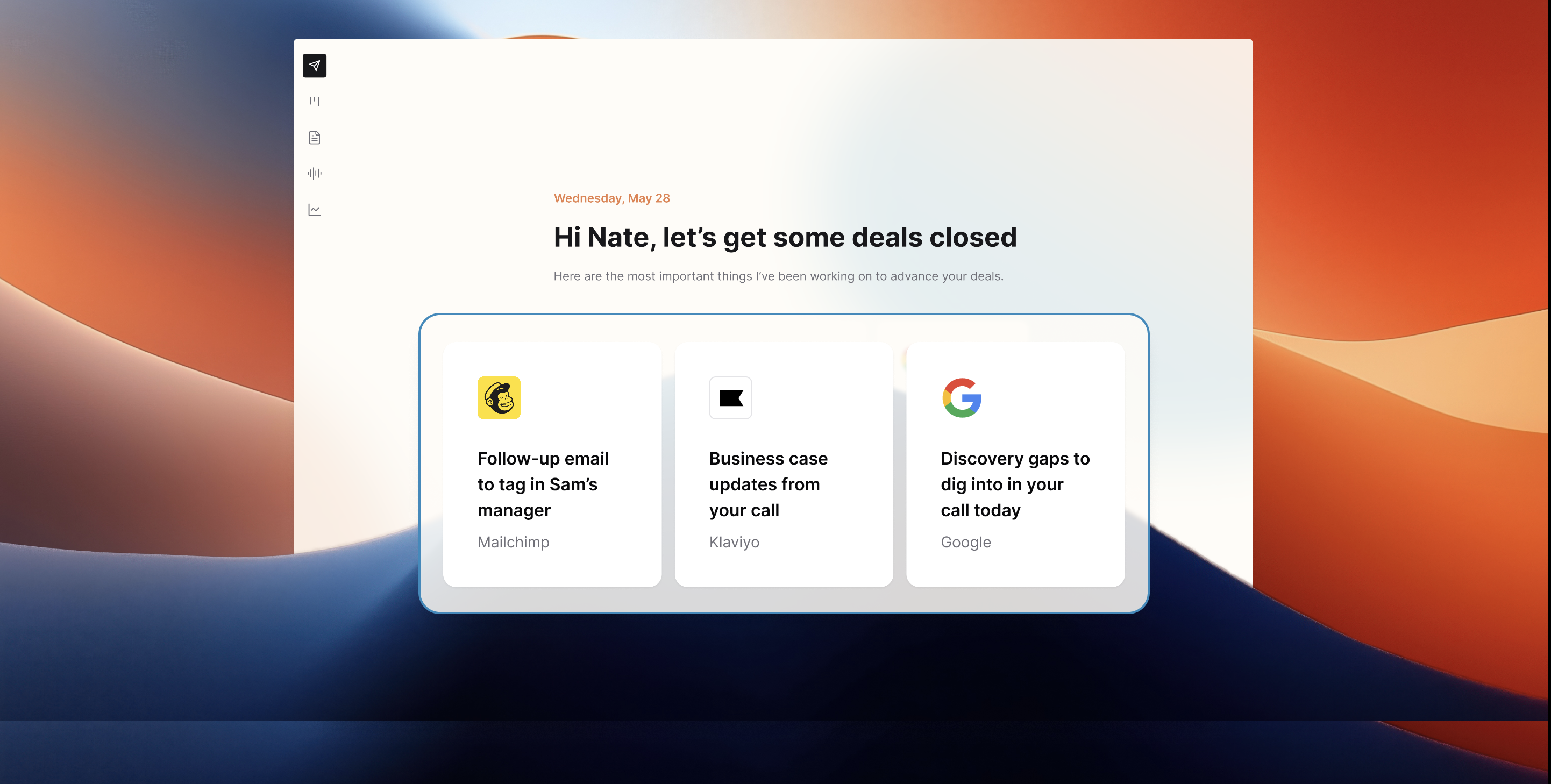7 Sales Lessons Hidden Inside The “Business Case” Behind Ring’s $1B Acquisition
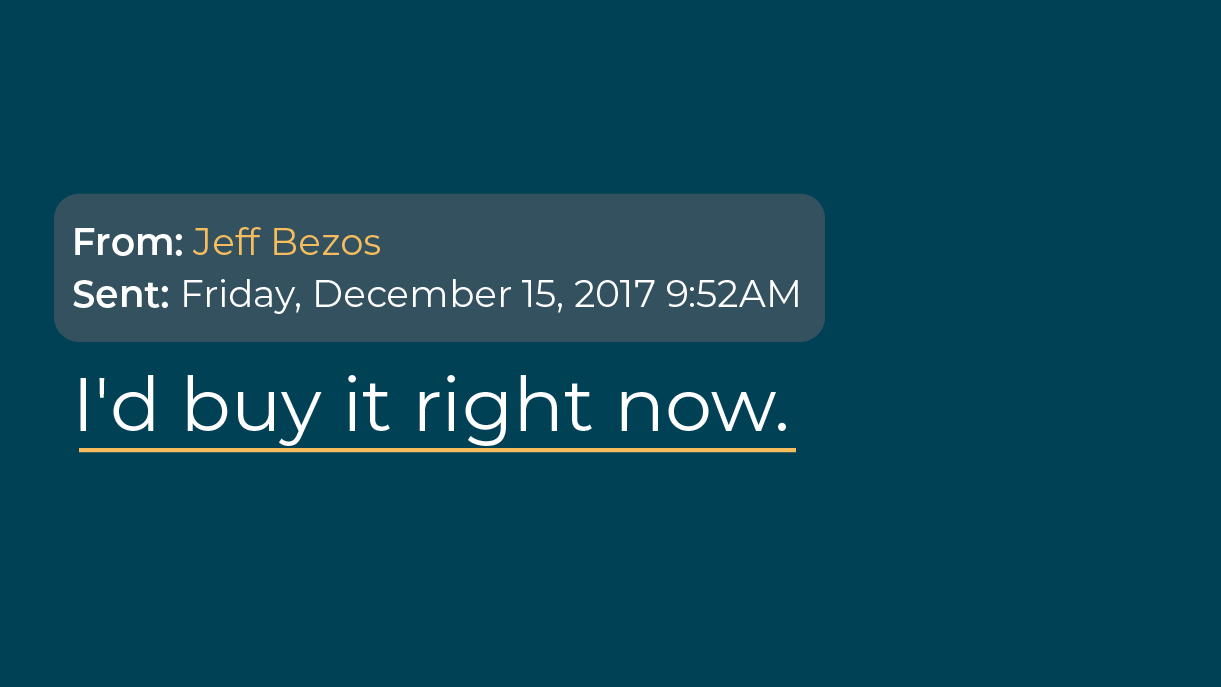

If you look at the way executives make some of their most significant, strategic, expensive and (potentially risky) decisions, there’s a pattern:
- The case for that investment is always written down.
- The narrative is always built around the same elements.
- It’s stripped free of all the “shiny” most sales decks have.
Here’s a “prime” example of this (sorry, I couldn’t resist):
Amazon acquiring Ring — the doorbell and home camera company — for $1 Billion in 2018.
The write-up behind that investment came out during some anti-trust litigation (big thanks, techemails.com, for surfacing this). Which means you can read the entire memo minus some redacted content, here:
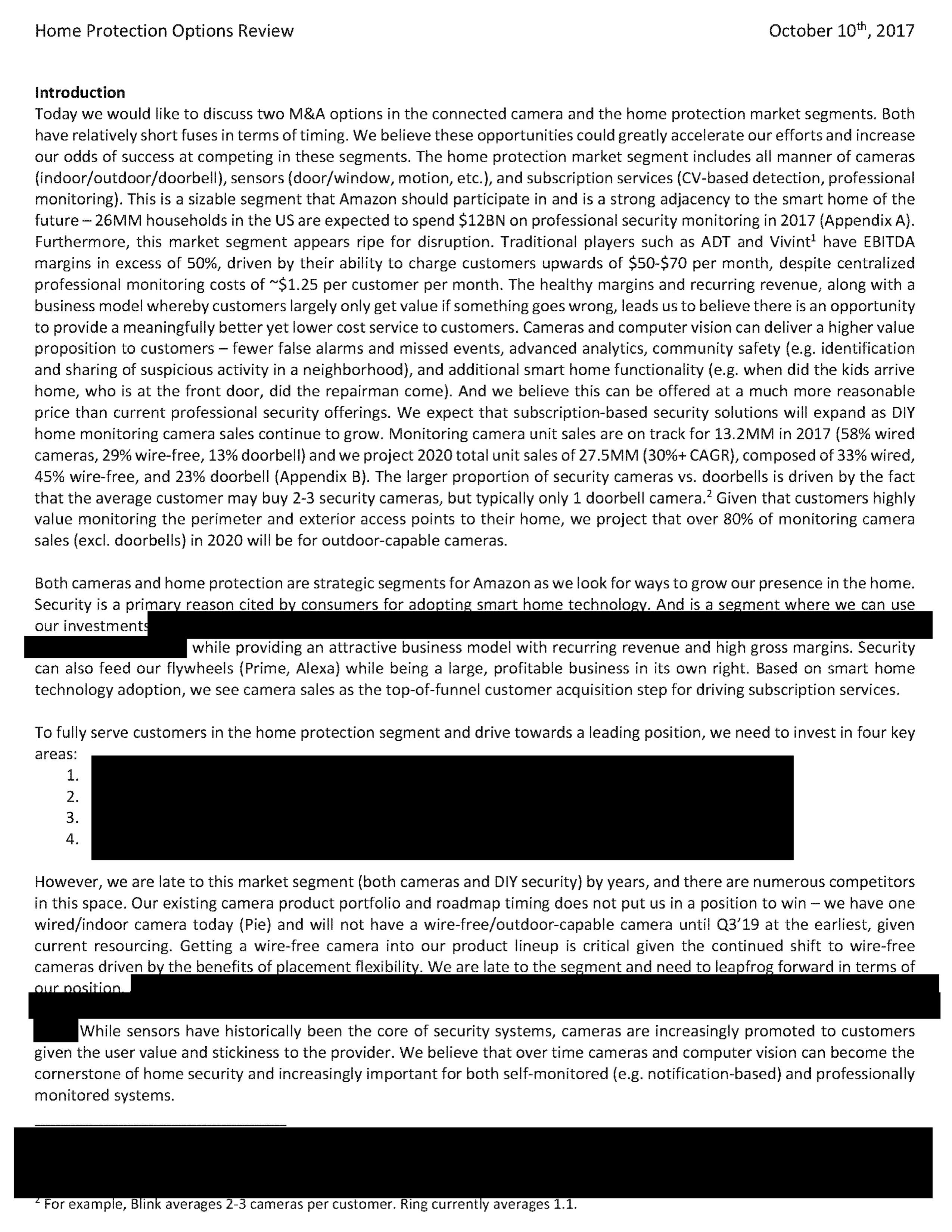
It’s about 5 pages worth. So if you’re not a major nerd, you’ll probably skip over the takeaways for sellers working on complex deals.
Lucky for you, I am that nerd.
So here’s a shortlist of takeaways you should know. Focused on what executives want from you, before deciding to fund your deal.
The Core Elements to Every Business Case
Here’s the rough structure behind the memo:
- Situation:
- What’s happening in the home protection market right now.
- How this market connects back to Amazon’s strategic priorities.
- Problem:
- The fact they’re behind, and late to the market.
- Amazon’s competitive positioning is weak, and getting weaker.
- Approach:
- Their options are (1) build internally, (2) create partnerships, (3) buy/acquire tech.
- Their M&A recommendation, and why it’s the highest probability of success.
- Options:
- The differentiators & “capabilities” of each “vendor” in the evaluation.
- Blink: company & tech overview, valuation, acquisition thesis.
- Ring: company & tech overview, valuation, acquisition thesis.
- Recommendation.
- Why buying Ring is likely the best path forward.
- Next steps, resources, and timeline for final diligence.
It hits all the high notes, and the questions an executive is going to ask. Also, notice the parallel to the frameworks outlined here:
(1) The 1-Page Business Case Framework
- Headline, Problem, Approach, Target Outcomes, Investment.
(2) The Consulting Style Executive Summary
- Situation, Complication, Recommendation.
Language Executives Respond To
Like Dave Kellogg, multiple-time CEO and CMO, says:
Almost without fail, [executives] share these qualities:
- They are direct. They speak clearly and in simple language. Buzzwords and spin are the province of middle management, not the C-suite.
- They go fast. They are busy. They don’t want to waste time.
You can see that in the language here. It’s clear, it’s direct, there’s no spin.
Notice the phrases like:
- “Each has a short fuse requiring action.”
- “We’d like to put an acquisition offer in front of the company this week.”
- “Our existing camera and roadmap does not put us in a position to win.”
And check out the short anecdotes whenever jargon is used.
Instead of just saying “smarthome functionality,” they add, “e.g. when did the kids arrive home, who is at the front door, did the repairman come?”
Simple writing is better than “sounding smart.”
“Big Doors Swing on Small Hinges”
Everything in this memo (and Amazon’s investment) hinges on this one paragraph:
Cameras and home protection are strategic segments for Amazon, as we look for ways to grow our presence in the home. [They] provide an attractive business model with recurring revenue and high gross margins. Security can also feed our flywheels (Prime, Alexa) while being a large, profitable business in its own right… we see camera sales as the top-of-funnel customer acquisition step for driving subscription services.
That soundbite is largely all Jeff Bezos needed to greenlight an investment.
Which is kind of funny, right?
They ended up spending ~$1.1B total to buy both Ring and Blink. Which isn’t a small amount.
But check out this email exchange, which starts with a lot of details and specifics sent to Jeff:
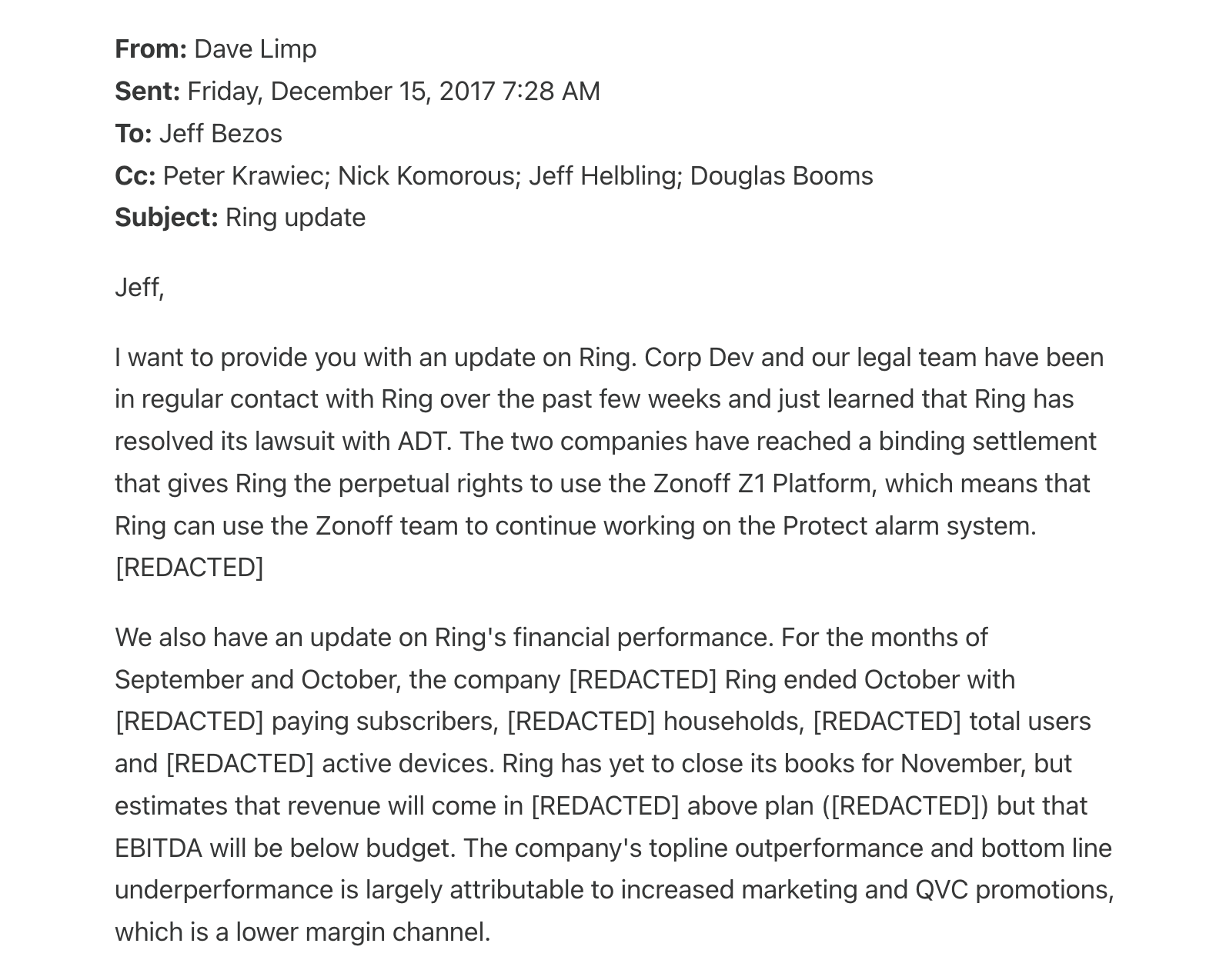
And then, Jeff’s initial reply. “I’d buy it right now.”
Which he later builds on by saying, “my view is we’re buying market position — not technology.”
The whole point of the soundbite above. Which stuck with Jeff.
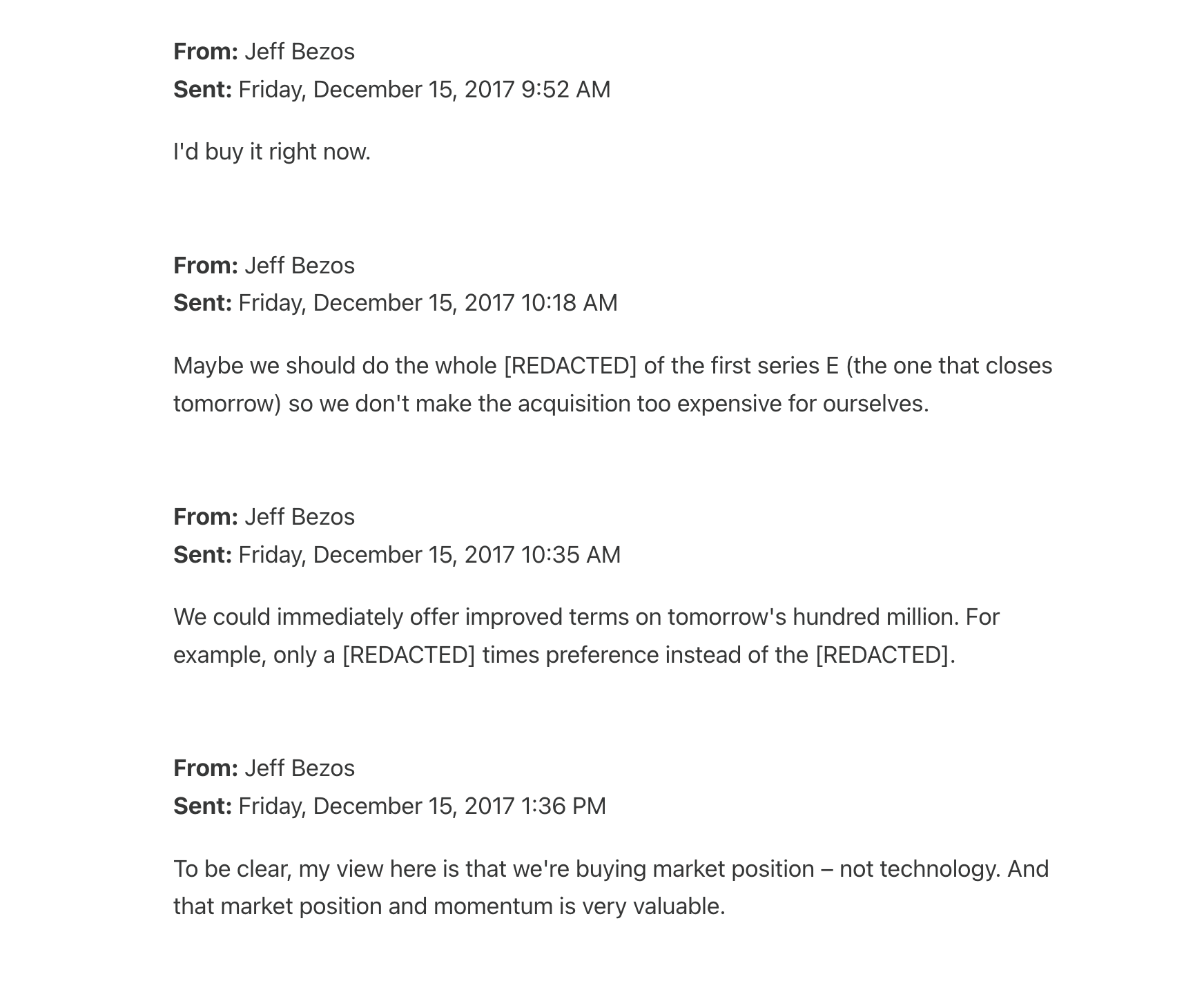
Quick Signoff on Big Investments
Related to Jeff’s short and quick email above, here’s a counterintuitive statement you’ll often hear from executives in strategic sales:
“We can’t afford that small of a budget.”
Did you catch that?
We often think larger contracts = slower approvals + lower win rates. But the reality is scoping larger deals more often increases your win rate.
Because execs know underinvesting in what’s important creates more risk. Not less.
So they're saying, “We can’t afford that small of a budget,” in a different way:
“This is too important and this feels too cheap to risk it.”
They’d rather spend $500K than $50K (or $5M vs. $500K) to make sure a project is fully resourced, gets done correctly, and change sticks.
(Or $1B to make sure they have market position.)
The trick is knowing what type of situation you’re in:
- (Strategic) Selling to a company-wide priority.
- (Functional) Solving a specific business unit's problem.
If you’ve tapped a priority, it likely means the exec won't risk that a project goes off the rails. So you can lose to someone with a scope 10X yours.
You'll know you're selling to priorities vs. problems, if:
- People refer to the internal project with a "codename."
- The project makes it to an all-staff meeting agenda.
- Same goes for a board meeting or ELT agenda.
- Three+ business unit leaders are impacted.
- This would go out in a press release.
- You'll impact a specific P&L item.
Or more simply, by the content in your deal:
- Projects: a narrative written with the buying team. (See above.)
- Products: template decks you add a new logo to, then send everyone.
Short & Dense Writing
Good writing has “density.”
Meaning, you’re able to compress a lot of insight into just a few words.
So you might open up this memo and think, “Wow, 5 pages. That’s really long.”
But if you could see all the hours, weeks, and months from the corporate strategy team that’s baked into these pages, you’d think:
“Wow, just 5 pages? How’d they get all that into 5 pages?”
PS, I’d also say that if you’re an external seller, you won’t command the same attention as an internal contact, so try to compress your writing even further:
Write Together, Over Time
Notice the “Situation Update” section inside the Blink and Ring breakdowns.
A write-up like this always starts with a rough draft, then evolves over time.
For example, it’ll start with a 3-section draft like situation, complication, recommendation. Then, you’ll build other sections by collaborating with the buying team.
Just like this process, which you can kickstart with these practices:
Creating a “Recommended Approach”
Most sellers try to differentiate themselves on a product-level.
In this case, the tech question would be, is a longer wire-free battery life better than a hardwired camera with better video quality?
It’s tough to say. So you’ll end up debating:
- Blink: long battery life with an “architecture” that optimizes wire-free power.
- Ring: high-definition video doorbells at 720p quality, with live-streaming.
But there’s a higher-level “approach” Amazon needed to debate first:
- Is it better to buy IP to continue building our own products?
- Is it better to buy a larger product portfolio and customer base?
Those are fundamentally different questions.
And as it turns out, they’re not “mutually exclusive.” You can do both. So in this scenario, Blink and Ring weren’t really seen as competitors:
…[we] believe there may be multiple paths to success. The two options presented below, Ring and Blink, represent two very different approaches (in terms of market segment position and tech/IP) to accelerate our efforts in this market segment.
That’s why they ended up doing both:
- Acquiring Blink for $90M.
- Acquiring Ring for $1B.
So the question for you is, have you aligned the buying team on their approach?
Or just a product feature?
.png)
Run with these practices, build a strong narrative, and you’ll start to see decisions like this:
FAQ's on:
Why stop now?
You’re on a roll. Keep reading related write-up’s:
Draft with one click, go from DIY, to done-with-you AI
Get an executive-ready business case in seconds, built with your buyer's words and our AI.
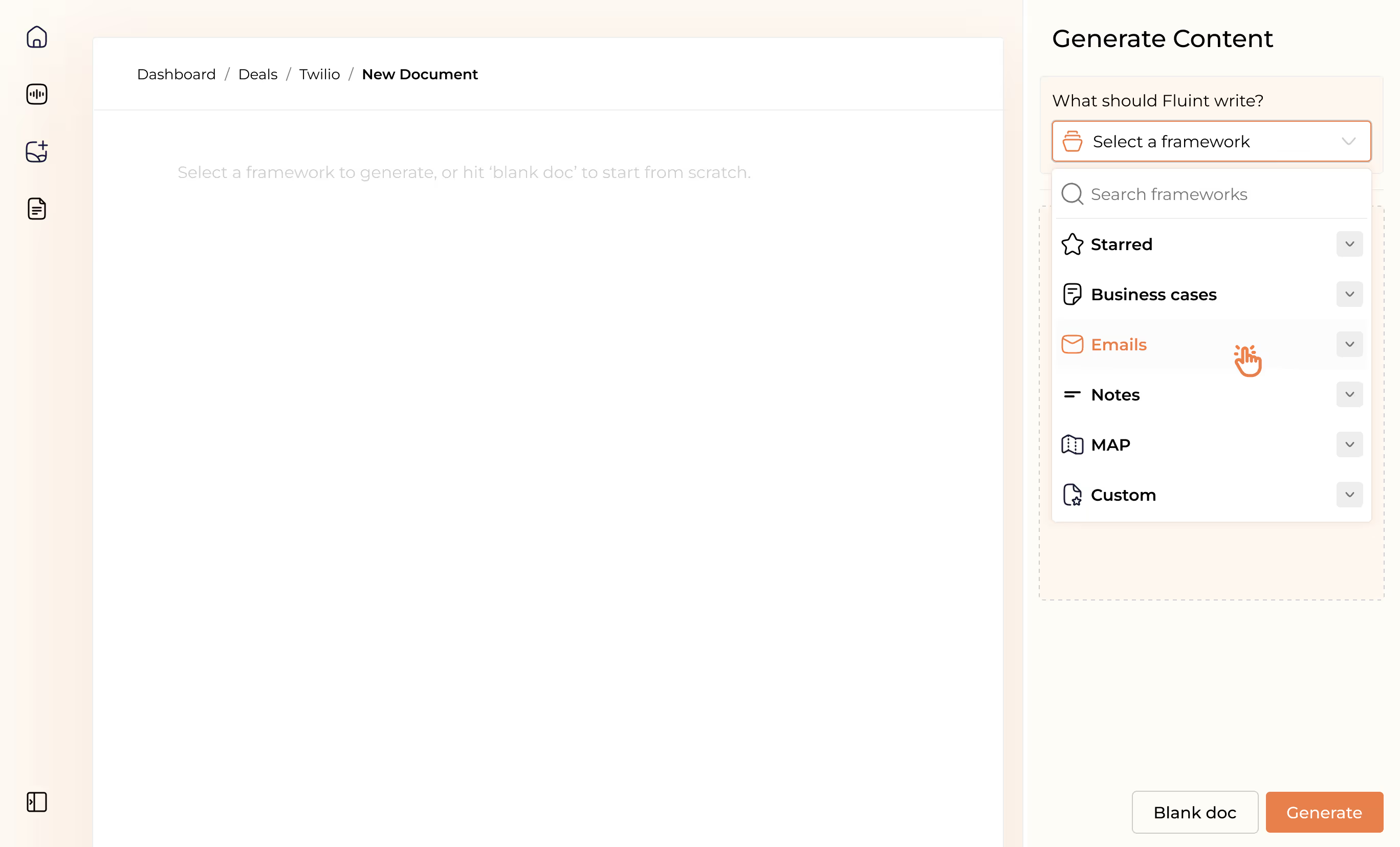
Meet the sellers simplifying complex deals
Loved by top performers from 500+ companies with over $250M in closed-won revenue, across 19,900 deals managed with Fluint

Now getting more call transcripts into the tool so I can do more of that 1-click goodness.



The buying team literally skipped entire steps in the decision process after seeing our champion lay out the value for them.


Which is what Fluint lets me do: enable my champions, by making it easy for them to sell what matters to them and impacts their role.






